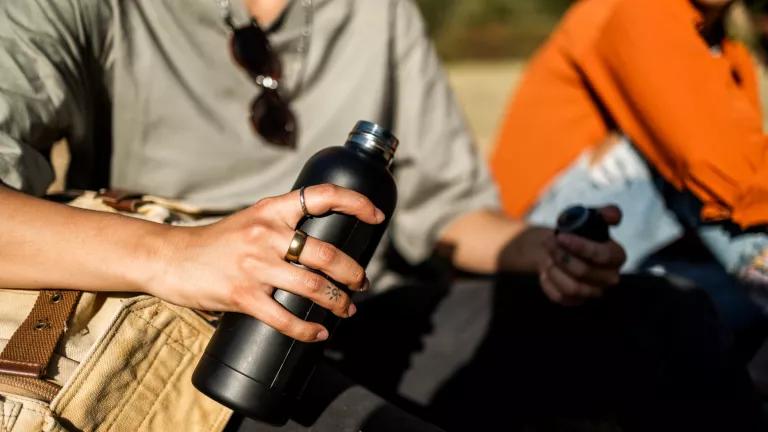Strengthening City Actions to Reach India’s Clean Air Goals

Co-authored by Prima Madan, Kim Knowlton, and Polash Mukerjee
India’s air pollution challenges have made international news headlines this month, with air quality in Delhi reaching emergency levels of more than 20 times the World Health Organization (WHO) standard. But dangerous exposures to air pollution extend far beyond the capital city: India’s Central Pollution Control Board (CPCB) has identified 122 non-attainment cities across the country that exceed the country’s national ambient air quality standards. In early 2019, the Ministry of Environment, Forests and Climate Change (MoEFCC) launched a National Clean Air Programme (NCAP), which mandates plans aimed to cut levels of dangerous fine articulate matter air pollution by 20-30% by 2024.
Given the scale of this challenge, effective and coordinated implementation of city-driven NCAP implementation plans is vital. Under the NCAP, cities are actively undertaking steps to better control pollution sources. Almost all non-attainment cities have drafted city-level action plans. These plans detail direct ways to cut harmful particulate matter. However, in many cases, these actions need to be supplemented with interventions to help cities mitigate emission sources, adapt better to rising levels of air pollution, and build resilience for vulnerable populations.
City leaders are actively working to control harmful pollution at its various sources (e.g., coal-fired power plants, industrial operations, the transportation sector, and biomass and solid waste burning). These efforts need to be implemented in ways that prioritize public health protection and sustainable air quality improvements over the long term. There are also opportunities to strengthen city actions through facilitated cross-city learning and cooperation.
Highlighting Health Risks
The health community is particularly engaged on this issue. Across the country, medical professionals and public health practitioners are actively involved in addressing the dangers posed by air pollution. In the city of Ahmedabad, for example, leaders worked with experts from IITM’s System of Air Quality and Weather Forecasting And Research (SAFAR) program to expand pollution monitoring and communicate the results within a health context through the city’s Air Information and Response (AIR) Plan. The AIR Plan aims to reduce exposure to air pollution and motivate longer-term pollution reduction strategies that protect public health. Elsewhere, hospitals in Chennai are monitoring air quality and alerting the public to harmful air pollution levels, and new efforts in Mumbai are shedding light on harmful air pollution exposures encountered by commuters. In Delhi, Dr. Arvind Kumar, founder of the Lung Care Foundation is highlighting the health emergency posed by air pollution by drawing attention to the major damage caused by polluted air that’s increasingly visible in the lungs of his own patients.
Strengthening City Actions
Last week in Delhi, experts convened for a Sustainable Action Dialogue on Air Pollution. At the meeting, government officials, academic researchers, and members of civil society discussed actions to fight air pollution and enable more comprehensive solutions to improve India’s air quality.
Building on the themes of that event, NRDC, working in partnership with partners at the Indian Institute of Public Health-Gandhinagar (IIPH-G) and the Indian Institute of Tropical Meteorology (IITM), convened an expert roundtable dialogue on ways to strengthen air quality management at the city level, in Ahmedabad on 21 November.
In advance of this convening, NRDC and partners reviewed the existing city action plans for more than 90 non-attainment cities under the NCAP. From these, 10 large metropolitan cities were analyzed in detail. These include Delhi, Ahmedabad, Pune, Hyderabad, Kanpur, Nagpur, Patna, Surat, Kolkata and Mumbai. The analysis helped to identify a common set of mitigation measures aimed at reducing emissions from key emission sources, including industrial emissions, transport sources, combustion, biomass and solid waste burning, construction and demolition. It also highlighted common strategies for achieving pollution reduction goals and ways to further strengthen city efforts.
These findings were presented at the roundtable, followed by detailed remarks by city officials and knowledge partners on opportunities for strengthening the city action. Some of the key remarks at the roundtable included:
- “Pune as a city is developing very fast. Although Air pollution is at relatively low levels now, it will soon be at Delhi’s stage, unless action is taken soon. Pollution in the city affects women, children and elderly the most. There is a need for regional as well as city level policy with clearly defined action items, timelines and targets”
– Amar Karan, Scientist SD, Centre for Environment Education, Pune - “The Ahmedabad Municipal Corporation launched the Heat Action plan in 2013, and the city’s Air Action Response Plan in 2017. Recently, our Municipal Commissioner released a vision document on how the city can reduce air pollution by 2025. The AMC remains committed to action on air pollution”
– Dr. Chirag Shah, Nodal Officer for Air Pollution, AMC - “The city’s Clean Air Plans under NCAP need to address short, medium- and long-term measures. The robustness of the plans will reflect whether the city has adequate capacity to assess its state of air pollution, the sources of emissions as well as the actions needed to improve air quality. The NCAP is designed to build on existing programmes of the government, such as the Ujjwala programme”
– Arvind Kumar Jha, Scientist D, Central Pollution Control Board - “The city level plans to counter air pollution need to address issues of land-use. Unless this is captured, long term pollution cannot be effectively countered”
– Dr. Vidhee Kiran Avashia, IIM Ahmedabad - “In my experience as a pulmonologist, cases of bronchitis in Ahmedabad have worsened and lung cancer in women and children have become more common. Most of the respiratory diseases caused by air pollution are non-reversible, and are not easily diagnosable – throat irritation and cough are the only symptoms. “
– Dr. Gopal Rawal, Pulmonologist, Ahmedabad
The roundtable provided an effective opportunity to bring together different city level stakeholders. NRDC and our partners are looking forward to keeping up the momentum on this issue to help catalyze successful city level actions through effective cooperation and knowledge sharing. Roundtable discussions will be incorporated into a forthcoming issue brief on the NCAP analysis, to be released soon.






